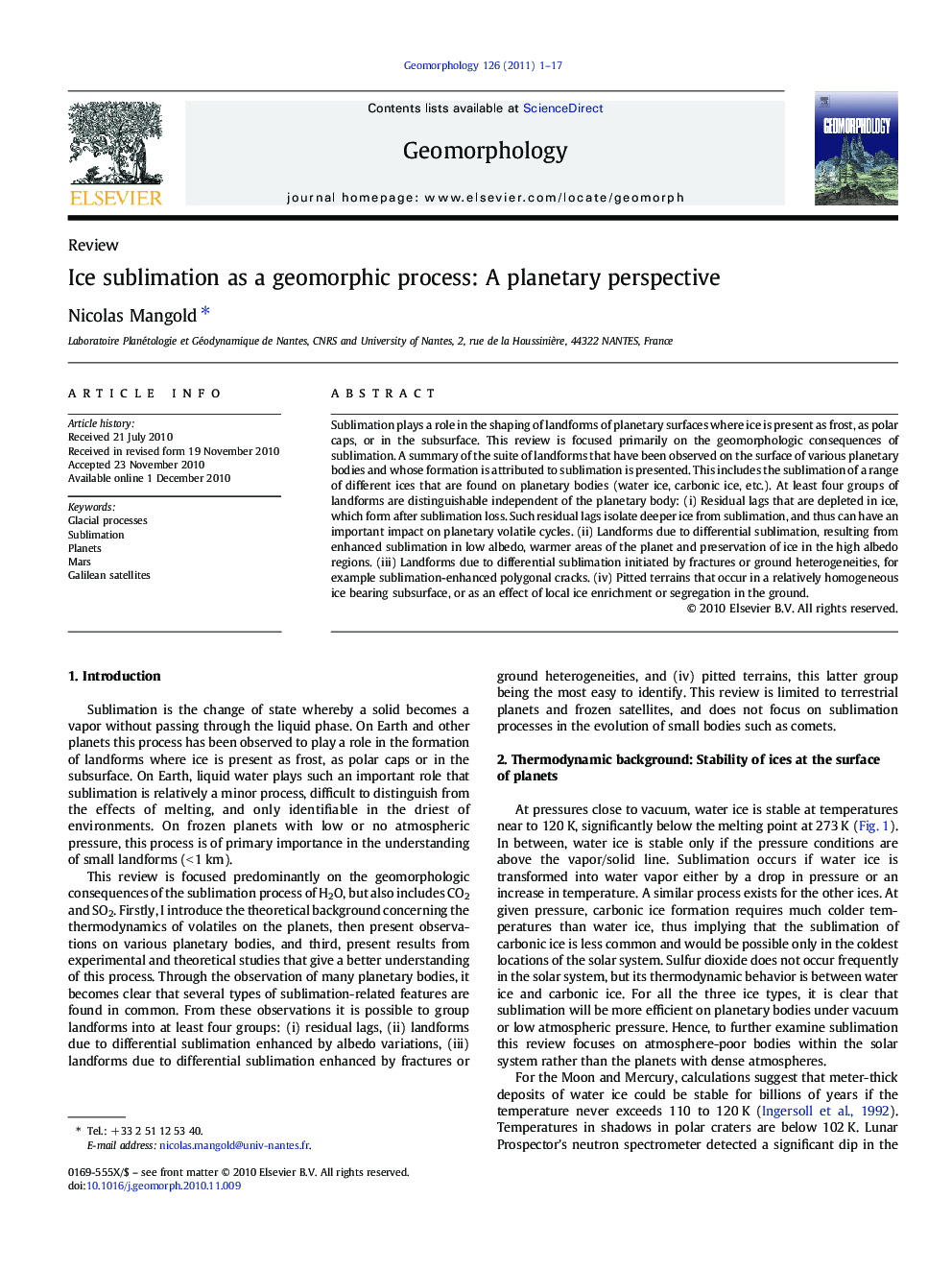| Article ID | Journal | Published Year | Pages | File Type |
|---|---|---|---|---|
| 4685658 | Geomorphology | 2011 | 17 Pages |
Sublimation plays a role in the shaping of landforms of planetary surfaces where ice is present as frost, as polar caps, or in the subsurface. This review is focused primarily on the geomorphologic consequences of sublimation. A summary of the suite of landforms that have been observed on the surface of various planetary bodies and whose formation is attributed to sublimation is presented. This includes the sublimation of a range of different ices that are found on planetary bodies (water ice, carbonic ice, etc.). At least four groups of landforms are distinguishable independent of the planetary body: (i) Residual lags that are depleted in ice, which form after sublimation loss. Such residual lags isolate deeper ice from sublimation, and thus can have an important impact on planetary volatile cycles. (ii) Landforms due to differential sublimation, resulting from enhanced sublimation in low albedo, warmer areas of the planet and preservation of ice in the high albedo regions. (iii) Landforms due to differential sublimation initiated by fractures or ground heterogeneities, for example sublimation-enhanced polygonal cracks. (iv) Pitted terrains that occur in a relatively homogeneous ice bearing subsurface, or as an effect of local ice enrichment or segregation in the ground.
